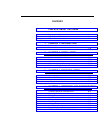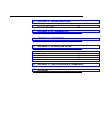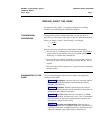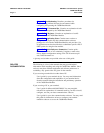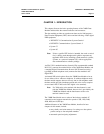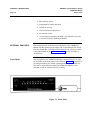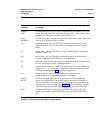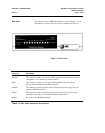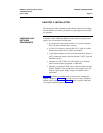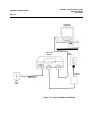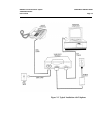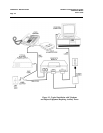
DEFINITY Communications System CHAPTER 1: INTRODUCTION
7400B Data Module
User’s Guide
Page 1-1
CHAPTER 1: INTRODUCTION
This chapter discusses the basic operating features of the 7400B Data
Module and describes the external indicators and connectors.
The data module provides an asynchronous data service link between a
Data Terminal Equipment (DTE) device and the following AT&T digital
PBX equipment:
●
●
●
●
DEFINITY™ Communications System Generic 1
DEFINITY Communications System Generic 2
System 75
System 85
Note:
Unless a specific DTE device is intended, the words terminal
device shall be used throughout this guide to represent any
applicable DTE device, including a dumb terminal, a printer,
a plotter, or a personal computer (PC) with an appropriate
data communications software package.
An EIA-232-D standard interface (formerly EIA recommended standard
RS-232-C) connects the terminal device to the 7400B Data Module, and
a standard Digital Communications Protocol (DCP) interface (using a
type D8W modular telephone cord) connects the data module to the
digital PBX.
An internal DIP-switch option allows the 7400B Data Module to be set
for use either with or without a telephone. In without-telephone mode,
the data module supports data service only, but in with-telephone mode
the data module provides simultaneous data and voice service (requires
an associated AT&T 7400-series DCP digital voice terminal).
Note:
If a 7400-series voice terminal with data features is used
with the 7400B Data Module, data service is provided by the
7400B Data Module and the data features of the voice
terminal cannot be used.
The 7400B Data Module uses a subset of the industry-standard AT
command set and supports transmission speeds of 300, 1200, 2400,
4800, 9600, and 19,200 bps.
Additional features of the 7400B Data Module, described in later
chapters of this manual, include:
non-volatile, read-write memory for storing two data options
profiles and up to four telephone numbers
automatic speed and parity adjustment
●
●





